Our second day in Barcelona was a day of exploration through the historical and artistic aspects of this modern city. The grand finale of our exploration was Park Guell. Construction began for Park Guell in 1900. At this time, Barcelona was a modern, cosmopolitan city–a city growing at record speed. According to the park literature, Barcelona was “highly dynamic artistically” and in the late 19th century and early 20th century, the idea of a rebirth of the Catalan Nation moved to the forefront.
The art and architecture patron, Eusebi Guell commissioned Antoni Gaudi, a pioneer of the Spanish Modernista movement, to create an estate (or subdivision) for wealthy families on a large property owned by Guell known as the Muntanya Pelada (bare mountain). The location was exceptional, with sweeping views of the metropolis of Barcelona to the blue Mediterranean Sea. The estate was to have sixty plots and a complex network of paths, viaducts, and steps to properly connect the properties over the terrain. Guell’s vision was to create an estate similar to the British residential estates, which is why he used the English word, Park in the name.
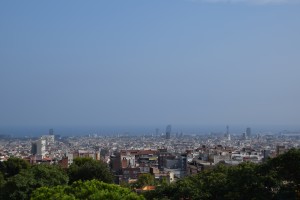
Unfortunately, Guell’s strict building conditions, the exclusive nature of the estate, and the lack of transportation at the time caused the plot sales to be sluggish to nonexistent and the work halted in 1914. Upon the death of Eusebi Guell, his heirs offered the estate to the Barcelona City Council, who acquired the estate and opened it as a park in 1926. UNESCO declared the park a Cultural Heritage of Humanity in 1984.
The Teatre Grec, or Nature Theater in English, was a type of public square meant for holding open-air shows. Part of the square was built into the mountain and part is held up by the columns of the Hypostyle Room. I loved the wavy bench loaded with ceramics encircling the square.


Entrance to the a portion of the park is free, however to get inside the Monumental Zone, travelers need a timed ticket–approximately 7 euros at this time and the Monumental Zone is where all the cool stuff is, so it’s worth the few Euros to explore at your leisure.
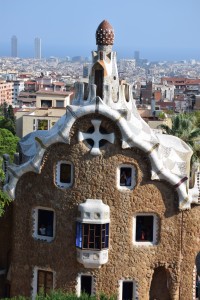
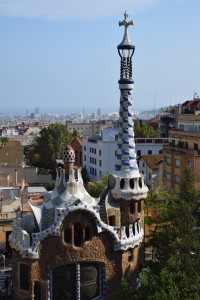
After spending time in Barcelona visiting the works of Gaudi, he has become one of my favorite architectural artists. His style is whimsical and detailed. I love his incorporation of the natural world into his art. Being a lover of mosaics, his style resonated with me. Gaudi introduced the method of trencadis, which uses discarded, waste ceramics in his art–ceramics of different colors, shapes and designs–and not all flat pieces. Gaudi used ceramic pieces from plates and cups as well as tile.
There were surprising elements in the Monumental Zone. For example, in the Hypostyle Room, at first glance, the columns seem to be perfectly in line and straight. A closer look gives a surprising perspective – off-kilter columns at two ends of the structure.
The Hypostyle Room was intended to be used as the market areas for the estates. The layout is interrupted in sections to create three open spaces, one larger, central space and two smaller spaces, like the naves of a church. The beautiful ceiling is formed into small domes built using the Catalan vault technique with areas of tiled domes. To me, they looked like reverse pools.
The Teatre Grec sits atop the Hypostyle Room.
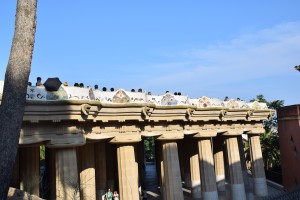
The Portico of the Washerwoman and the Ramp were my favorite structures–it seemed to be built straight from the Earth–almost as if the Earth came alive and froze in time. Gaudi used this tension between architecture and nature quite often in his works.
Gaudi inspired me to get a bit whimsical myself with my photography.
Finally, at the end of our journey, we climbed to the very top of the park (outside the Monument Zone). The hike was rigorous, especially after walking our legs off all day, but the views of the city and the Mediterranean were impressive. I kept telling myself the best views require a bit of work. What a way to end our day!
Next: Barca Beginnings

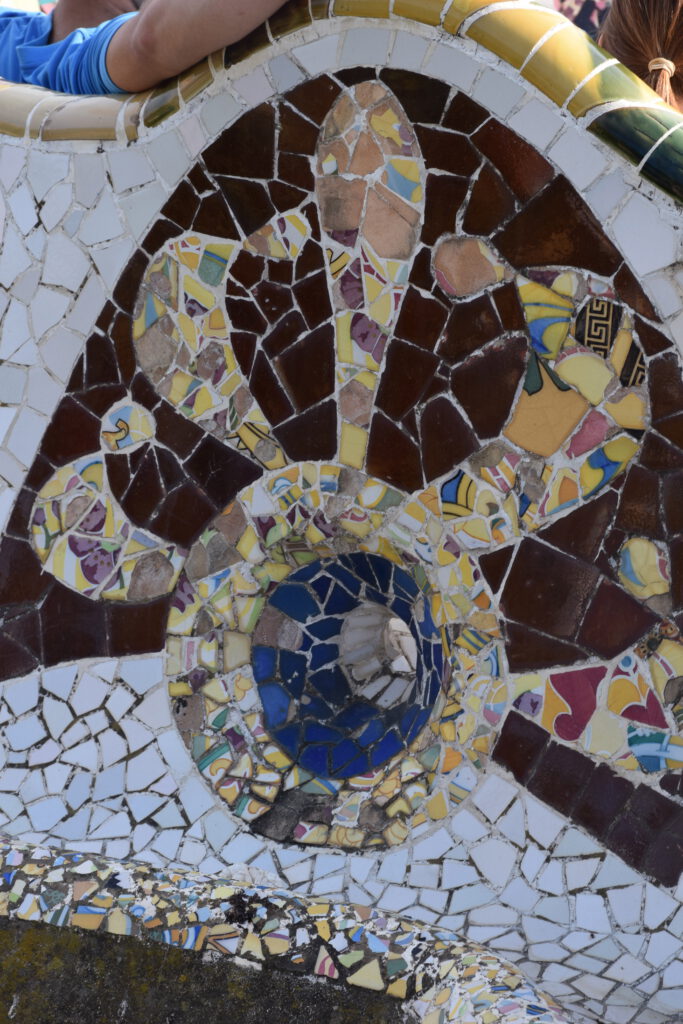
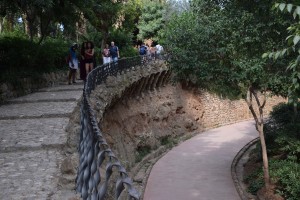
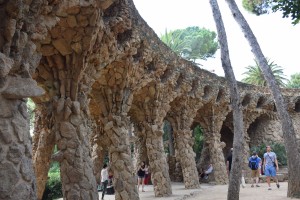
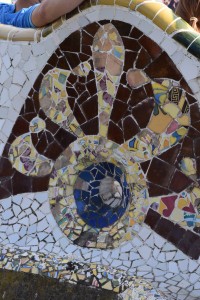

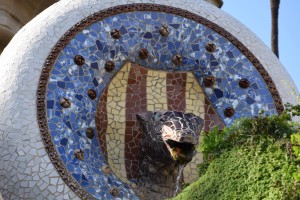
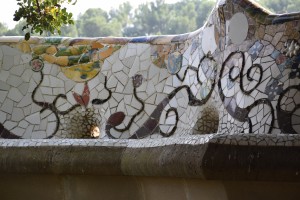

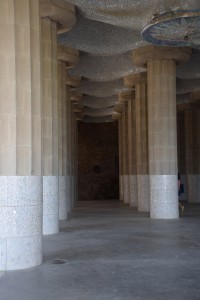
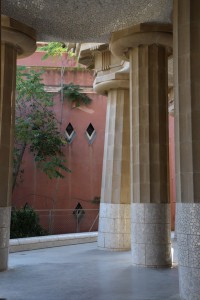
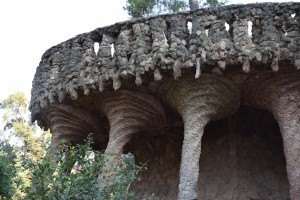

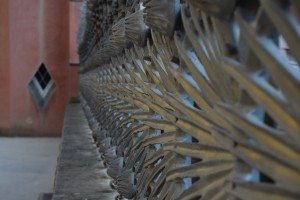

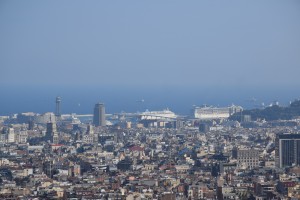
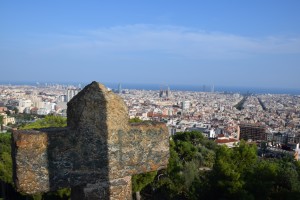
Pingback: Pintxos and Txakoli - Basque Delights - Bella Travel Planning